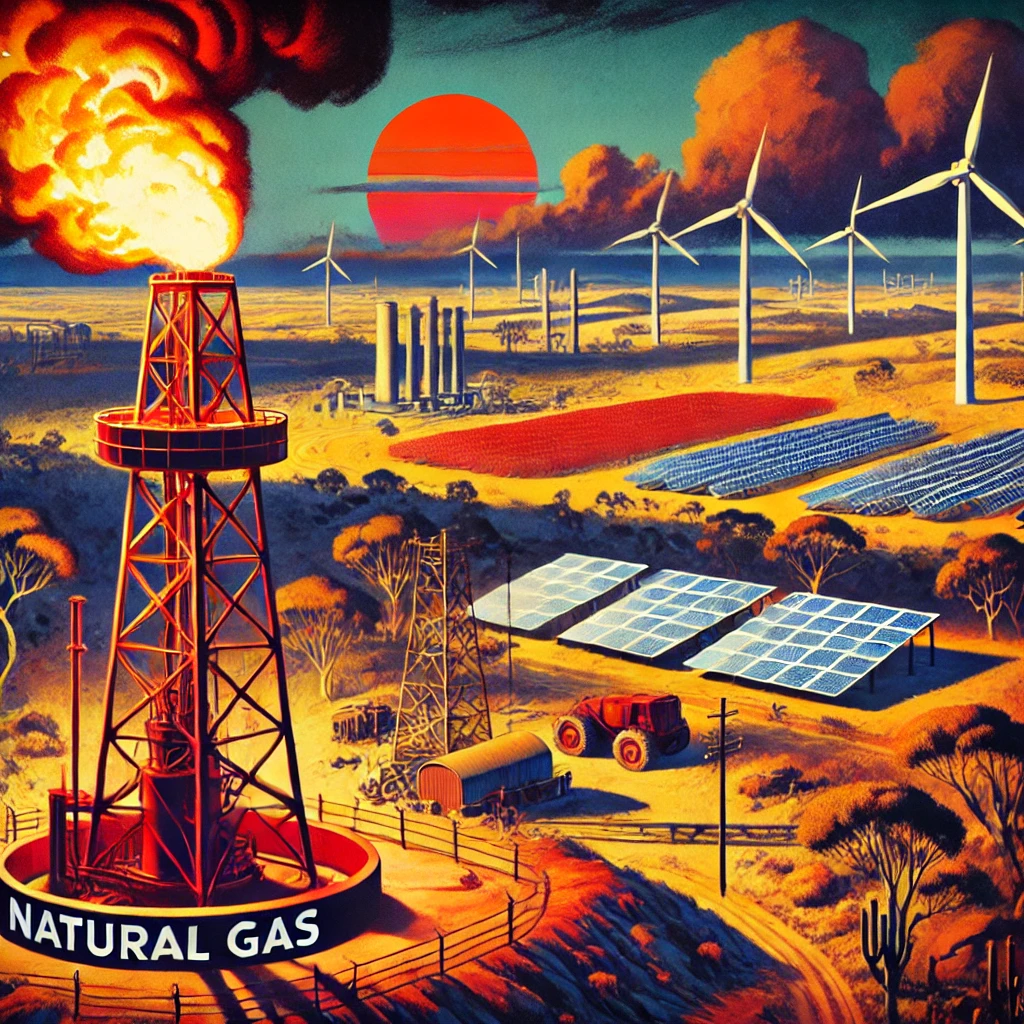
The Australian outback stretches wide and unyielding, a testament to nature’s raw power. Against this backdrop, a digital mirage flickers to life, cloaked in soft blues and greens. The website "Keeping the Country Running" promises progress, sustainability, and a future powered by natural gas. It feels polished, reassuring—until you start peeling back the layers. Beneath the glossy facade lies a narrative constructed to preserve the power of an industry that thrives on an increasingly fragile ecosystem.
Its advocates claim that natural gas is the bridge to a renewable future. But it's a claim buckling under the weight of its own contradictions. Methane, the invisible backbone of natural gas, is up to 84 times more potent as a greenhouse gas than carbon dioxide over a 20-year period. Leakage during extraction and transport can render its supposed benefits moot, turning it into a climate liability rather than a savior.
As global energy paradigms shift, relying on gas threatens to stall the adoption of truly sustainable solutions. Reports show nations like Denmark and Costa Rica are bypassing gas infrastructure entirely, proving that renewables can stand on their own when bolstered by modern storage and smart grid technologies. The longer we lean on gas, the further we delay the future it claims to bridge toward.
A mirage of economic prosperity
The site celebrates the economic windfall of natural gas: jobs, investments, growth. These promises echo hollow in an era where renewables are emerging as the true economic drivers. Solar and wind industries are outpacing fossil fuels in job creation, fueled by lower operational costs and advancements in technology. Moreover, the fossil fuel narrative conveniently ignores the looming specter of stranded assets—billions of dollars sunk into infrastructure that could become obsolete as the world pivots toward net-zero goals.
Communities dependent on fossil fuels face a cruel paradox. While the industry funds short-term livelihoods, it jeopardizes their long-term resilience, tethering them to a volatile market prone to geopolitical shocks and price instability. By contrast, renewable energy projects often operate at smaller, decentralized scales, fostering local ownership and resilience.
“Cleaner, greener, better.” That’s how the site pitches natural gas, sidestepping the environmental carnage it leaves in its wake. Hydraulic fracturing, or fracking, has poisoned water supplies, scarred landscapes, and triggered earthquakes. Methane leaks from aging pipelines carve invisible wounds in the atmosphere. While gas may emit less carbon dioxide than coal when burned, this reduction pales in the face of its full environmental footprint.
Even more insidious is the industry’s co-opting of “clean energy” rhetoric. By presenting gas as a low-emission alternative, it distracts from its role in perpetuating the fossil fuel paradigm. Real clean energy is abundant, inexhaustible, and free from the shackles of extraction economies.
False promises
The website paints natural gas as a guardian of energy reliability, framing renewables as fickle and untested. Yet real-world evidence contradicts this claim. Advances in battery storage, hydrogen technology, and grid balancing are enabling renewables to provide consistent, dependable power. Countries embracing these technologies are achieving energy independence without doubling down on fossil fuels.
The narrative of gas as an energy security linchpin exploits fear, preying on the uncertainties of energy transitions. It dismisses the innovative potential of communities and technologies ready to meet the challenge of sustainable energy.
Net Zero or Not Zero
Net-zero by 2050—an ambitious goal, or so it seems. Without concrete plans, milestones, or accountability, such commitments ring hollow. The gas industry’s net-zero rhetoric often relies on speculative solutions like carbon capture and storage, which remain economically unviable at scale. In reality, these pledges buy time for continued fossil fuel exploitation while deflecting scrutiny.
Industry fears
"Keeping the Country Running" reflects an industry grappling with its own obsolescence. It clings to power through misinformation, portraying gas as the lesser evil in a landscape where the stakes are existential. But the future it resists is already here, unfolding in wind farms, solar arrays, and innovative grids across the globe.
The website’s carefully constructed narrative aims not just to mislead but to delay. Every year we stay tethered to fossil fuels is a year stolen from the renewable revolution, a year the planet cannot afford.
The question isn’t whether Australia can transition to renewables—it’s whether we’ll let the gas industry delay it long enough to render the question moot.
As the sun sets over the Australian outback, the gas flares burn defiantly against the horizon. They are symbols of an industry at war with time, blazing into a future that demands we extinguish them for good. It’s not too late to pivot—to embrace the unyielding power of sun and wind, to rewrite the narrative of energy for a generation that refuses to be gaslit by the lies of the past.
The revolution waits. The only question is: will we rise to meet it?